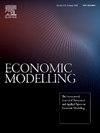Improving minimum-variance portfolio through shrinkage of large covariance matrices
IF 4.2
2区 经济学
Q1 ECONOMICS
引用次数: 0
Abstract
The global minimum-variance (GMV) portfolio derived from the sample covariance matrix often performs poorly due to large estimation errors. Linear shrinkage covariance estimators have been extensively studied to address this issue. This study proposes an optimal shrinkage intensity selection for the linear shrinkage estimator family using cross-validated negative log-likelihood function minimization. Moreover, we provide theoretical insights into the selection process. Empirical studies have shown that the proposed approach produces more stable covariance matrix estimators than the Frobenius loss minimization method, resulting in improved GMV portfolios. Furthermore, linear shrinkage estimators that use a diagonal matrix or a matrix based on a one-factor model as the target matrix generally achieve the best performance. They also outperform nonlinear shrinkage covariance estimators, especially with a large number of assets. This superiority is evident in terms of out-of-sample variance, turnover, and the Sharpe ratio.
求助全文
约1分钟内获得全文
求助全文
来源期刊

Economic Modelling
ECONOMICS-
CiteScore
8.00
自引率
10.60%
发文量
295
期刊介绍:
Economic Modelling fills a major gap in the economics literature, providing a single source of both theoretical and applied papers on economic modelling. The journal prime objective is to provide an international review of the state-of-the-art in economic modelling. Economic Modelling publishes the complete versions of many large-scale models of industrially advanced economies which have been developed for policy analysis. Examples are the Bank of England Model and the US Federal Reserve Board Model which had hitherto been unpublished. As individual models are revised and updated, the journal publishes subsequent papers dealing with these revisions, so keeping its readers as up to date as possible.
 求助内容:
求助内容: 应助结果提醒方式:
应助结果提醒方式:


